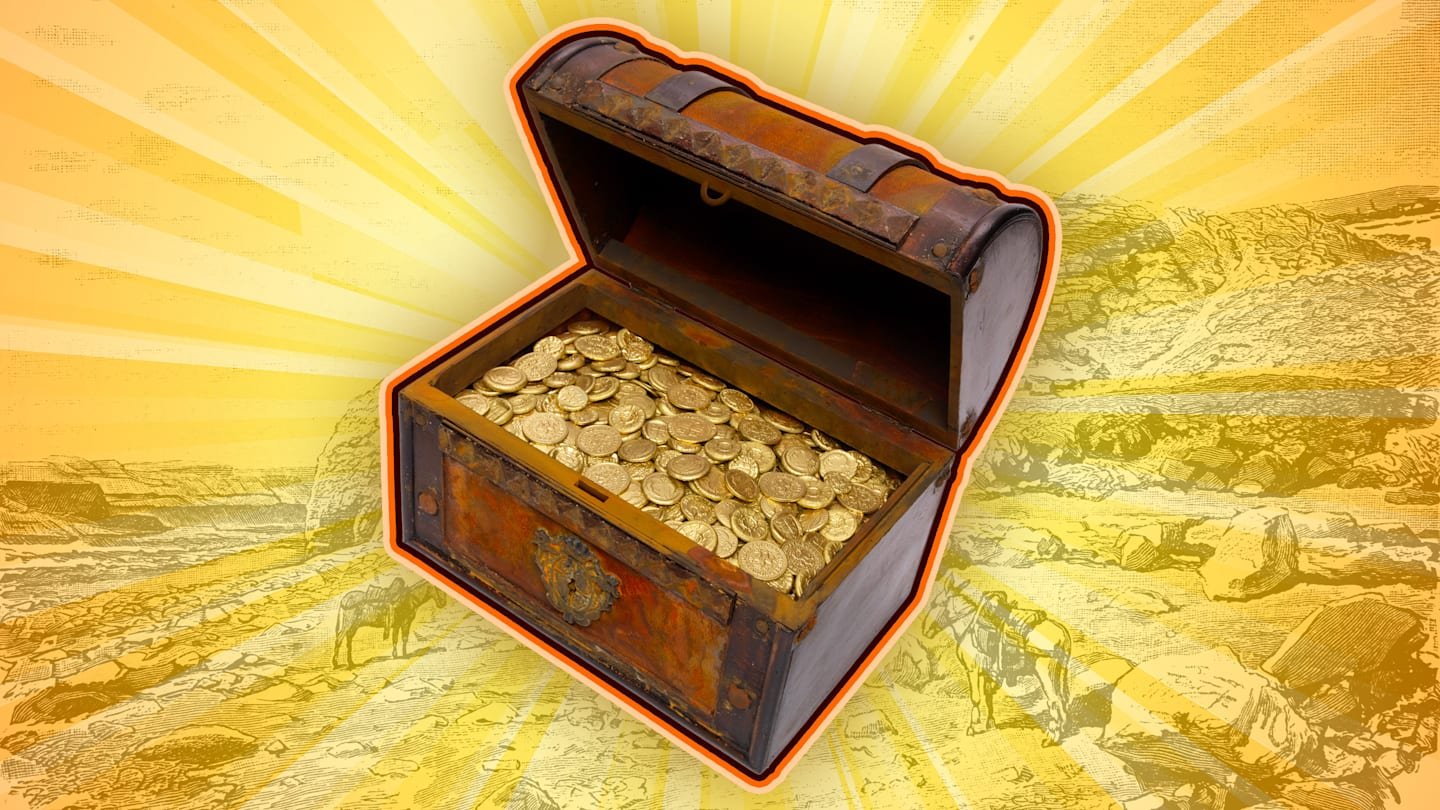
10 Amazing Archaeological Finds Discovered by Ordinary People (and One Badger)
Archaeologists are not always the largest archaeological discoveries. Sometimes ordinary people in their business are inadvertently stumbled in the discoveries of making history. Sometimes it is a raid.
- Childeric I’s Gold Hoard
- Rosita stone
- The oldest representative computer in the world
- Tudor and Westwart jewelry box
- Large stone fields
- Lascaux Cave paintings
- Dead Sea Manuscripts
- Takrota Army of Emperor Chen Shi Huang
- The graves of the middle agents
- Outzi Snowman
Childeric I’s Gold Hoard

On May 27, 1653, the worker Adrian Quinnokin was working on the Church of St.-Feress in Torna (in modern Belgium) when he, instead of dirt, gap the golden currency. The shovel revealed more detection of an old grave full of wonders: one hundred other coins, golden swords and vehicle, horse and confusion equipment, a solid golden TORC, a gold bull head, 300 gold bees and a golden ring. The opening episode is included.
Quinnokin found the Childeric I tomb, King of Sally Franx, who was buried in his capital, Tournai after his death in 481 or 482 AD. Two centuries after it was found, the Childeric treasure was stolen from Bibliothèque National De France. The thieves melted almost all of this, leaving only two currencies, and two bees and sword for the fish to hunt fish from the tined leather bags in the Seine River.
Rosita stone

The French soldiers built Fort Julian, outside the Egyptian city of Rosetta, in July 1799, on a black painting that was used as building materials. The superior officers of the soldiers realized that it could be an important artifact, so they alerted scientists at the D’AgYPTE Institute, whose history dates back to the slab until the second century BC. The engraving – a decree establishes the worship of King Ptolemy V – was written in Greek, Greek, and Hero -Greece. Because the same decree was written in three texts, Rosetta Stone The researchers gave the opportunity to decode the ancient Egyptian hieroglyphic. It took 20 years, but the researcher Jeanoa Shampolion ultimately Code.
The oldest representative computer in the world

the Antikythera mechanism It is a watch device of no less than 30 interlocking gears made in Greece in the second or third century BC. It is used to calculate heavenly events and Punhaline games (such as the Olympic Games), the mechanism is also the oldest known representative computer. In the first century BC, the Romans mobilized the ship full of luxury things that looted from all over Greece, and in the end the ship sank near Antikythere. Experts do not know exactly where the mechanism came from.
The sponge divers discovered after about 2000 years, in 1900. They recovered the mechanism – which now eroded in a mass of metal and wood – with no idea of what they found. It took seven decades and many X -rays of archaeologists to start knowing this.
Tudor and Westwart jewelry box

The workers were destroying the Wickfield house in Ribside, London, in 1912 when Pactions collided with the cellar floor a wooden box filled with jewelry. The fund set up more than 400 pieces of jewelry in the late sixteenth and early seventeenth century, including a Swiss watch located in the Colombian solid emerald, gold, diamonds and emeralds. And byzantine Gemstone Cameo.
Wickfield House was on a street known as Goldsmith’s breasts when these jewelry were collected, so the hidden may have been a stock of gold coins hidden underground during the English Civil War. Building workers fill the treasures in their pockets, shoes and caps, and selling them to the owner of a local store for the pawn who turned into the head of the London Museum’s acquisitions. The London Museum still owns Cheap mixed.
Large stone fields

When UNICED FRUIT Company workers cleared the forest in the Costa Rica Delta in the thirties of the twentieth century to make way for banana farms, they found their crimes blocked by large stone fields – some weighing a ton. Local workers heard tales of the great fields full of gold, so they made their best to reach the center of the stones, even to the dynamic limit. They did not find any gold, and many areas were damaged by attempts to move or open, but in the end the government intervened to maintain artifacts.
Subsequent studies have identified that the fields were created by DiQuìs culture Starting 600 m and continuing in the second millennium, and stopped before the arrival of the Spanish. Its size ranges from a few inches to more than six feet, and no one knows what it is. Nearly 300 of them live today as the National Costa Rica symbols.
Lascaux Cave paintings

The eighteen -year -old garage mechanic, Marcel Rafidat, was walking in the forest outside his village in Montegnak, France, in September 1940 when he encountered a cave entrance. Some say that its dog repelled the rabbit at the entrance. Some say that Marcel found it himself. Either way, he returned with three friends and explored the cave. Inside, they found riots from bulls, horses, curtains, nose, black and abstract shapes on the walls, the paint is still great. They were invoked to keep their discovery confidentiality, but they only managed to stick for a week before telling the teacher who was a local expert in prehistoric art.
the Lascaux He opened to the public in 1948, but was closed after only 15 years; The breath of visitors was harmful to the ecosystem of caves and displays trees, fungi and mold. Today’s visitors can visit a replica of the cave or do virtual tours.
Dead Sea Manuscripts

In 1947, three shepherds of Badwin Aneza were followed in a cave near the old Qomran site, one mile from the Dead Sea, and found mud containers containing seven manuscripts of the papyrus. They sold the papyrus to an antiquities merchant in Bethlehem to enter. When scientists flared up from the discovery, they tried to locate the cave. In 1949, they succeeded, and over the next decade, multiple excavation operations were discovered in many caves 981 texts – books from the Ecclesiastical Hebrew Bible, the second temple Apocrypha, and the beliefs of one or more Jewish sectarian groups – written from the fourth century before the first century of the first century. Qomran manuscripts A well -known manuscript was overpowered by the Hebrew Bible by more than a thousand years.
Takrota Army of Emperor Chen Shi Huang

On March 29, 1974, seven farmers dug a well outside Xian, China, at the top of the mud statue of normal. They informed the local authorities, who called archaeologists to dig the discovery. The statue has proven to be one of the estimates 8000 soldiers of clayEach with unique combinations of facial features, hair style, attitudes, and arm. The mud soldiers, officers, archers, cars, and knights weapons were aligned in the underground trenches, a vast power prepared to protect Emperor Chen Xiang (who died in 209 BC and was buried in a shrine that is not designed to be behind them) in subsequent life. The drilling has not yet been dug.
The graves of the middle agents

Ghuer spent five years drilling his larda on a farm in Stolby, northeastern Germany, only to leave in 2012 after the discovery of the pelvic bone for the former tenant (human). Later Archaeological excavation The graves of the eighth century, two of them were discovered from the Slavic leaders buried with bronze vessels at their feet. Other grave goods included a three-feet dual sword, an arrow head, a quarter of a snake belt on each side, and a coin in the mouth of one of the skeletons-the evidence of funerary ritual rituals before Christianity. Since the area was completely Christian by the twelfth century, Badger discovered one of the last burial of paganism in Brandenburg.
Outzi Snowman
Helmut and Erika Simon were roaming in the Alps in a retirement on September 19, 1991, when they saw the upper part of the body coming out of the ice river. Believing that he was a climber recently met with a deadly end, the couple reported their discovery to Gendarme. His attempt to extract the body using ice options and drilling a gift, which is a very well -known option after it was too late, was successful on September 22, and within days, the archaeologist at the University of Innsbruck identified this number as a man in the Bronze Age.
since then, OziIt was called the name of the mountains where it was found, it was a tremendous blessing of archaeology thanks to its distinguished state to preserve it. The researchers have sequence Genoma, discovered that it is likely to be a fanatic of Lukus, his lesson clothes The cause of death, and identified 19 modern men from southern Tirol, who are genetically associated with it. It is the 5300 -year -old mummy that continues to give.
Discover more wonderful effects:
A copy of this story was published in 2015; Updated for 2025.













Post Comment